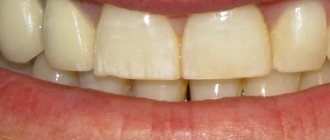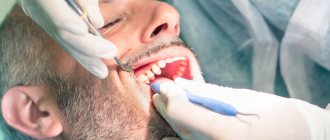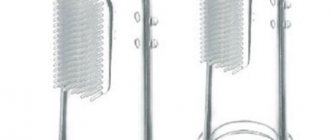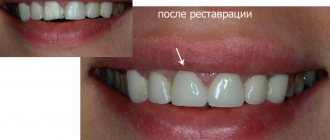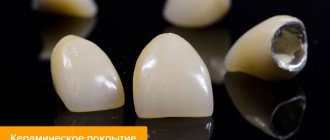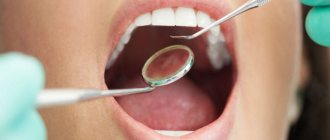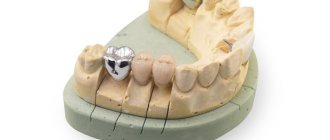Modern dental prosthetics Minsk – one of the most popular dental procedures. Loss of teeth and, as a result, malocclusion, the development of serious diseases of the oral cavity and the whole body are quite common. But if a couple of centuries ago there was no fight against this, today doctors are already offering a number of technologies for restoring the dentition.
Metal-ceramic dental are durable, easy to use and reliable, and they also look like real teeth. That is why many patients prefer to restore their teeth using metal-ceramic prosthetics. But in order to maintain the natural appearance of the crowns, it is necessary to properly care for them. The Family Dentistry Medical Center offers you to familiarize yourself with the list of basic recommendations for caring for metal-ceramic teeth.
Maintaining good oral hygiene
Artificial teeth, just like real teeth, need regular brushing in the morning and evening, and after each meal. If it is not possible to brush your teeth at one time or another, simply rinse your mouth with clean water and use a irrigator. Dentures should be cleaned vertically from the gums to the edges of the teeth. For these purposes, a regular toothbrush, or even one with soft bristles, is suitable, but it is better to consult your doctor about toothpaste. It is also advisable to use mouthwash and dental floss to thoroughly clean the spaces between your teeth. But in addition to home care, you should not refuse professional services: dental cleaning, removal of accumulated plaque and tartar. It is recommended to visit the dentist 2 times a year.
What does dental care consist of?
Let's look at how to care for metal-ceramic dentures:
- Clean the mouth at least twice a day.
- Disposing of leftover food after every meal, including snacks.
- It is advisable to avoid the use of nicotine, tea and coffee, which can leave unpleasant stains on dentures.
- Regular visits to the doctor to remove the plaque that has formed.
- Regularly remove structures at night, placing them in a special solution, or leaving them dry.
- Avoiding exposure to too high and low temperatures, as well as their changes.
- Do not try to chew hard foods, open bottles with your teeth, etc., which causes a lot of stress and can damage the prosthesis.
Rejection of bad habits
Smoking negatively affects the health of our body, but primarily affects our teeth. As a result, artificial crowns gradually begin to accumulate plaque and change their shade. A similar reaction is caused by excessive consumption of coffee, tea and drinks containing dyes, so you should monitor not only oral hygiene, but also daily habits, especially for those who like to use their teeth for other purposes (opening bottles, chewing off hard objects, etc.). d.).
The procedure for making crown structures for teeth made of metal-ceramics
- Before proceeding with crown modeling, the client is prescribed a series of laboratory examinations. To install a prosthesis, the patient's oral cavity must be completely healthy. Found open cavities are filled and professional cleaning is prescribed.
- Based on the results of the preparatory period, you can begin selecting the product. Some are known for their durability, while others come with more than a year's warranty.
- The production of the prosthesis is carried out in laboratory conditions in stages.
- To obtain a high-quality impression, the doctor carries out a procedure for preparing the supporting part of the chewing element. After which you can make a two-layer print. Then, permanent fixations or bridges are installed in place of the prepared teeth. The dentist must determine the center of closure of the dental system.
- The one-piece metal crown frame is precisely adjusted to size, and the ceramic veneer is selected to match the color of the patient’s teeth.
Nutritional Features
Too cold or hot food damages tooth enamel, especially if consumed at the same time (for example: hot tea and cold jam). Metal-ceramic dental crowns are also susceptible to heat and can crack, break, or suffer a variety of other damages that require immediate replacement. You should not indulge in solid foods, for example: nuts, candies, etc.
Our teeth, whether natural or artificial, are in dire need of daily and competent care. Do not forget to follow the recommendations of your doctor, and also monitor the health of your teeth: have your teeth treated under anesthesia and do not let oral diseases ruin your life. Modern dentistry in Minsk offers treatment without fear and pain, or more precisely, treatment in your sleep. Specialists at the Family Dentistry Center use drug sedation for these purposes. While the patient is sleeping peacefully, the doctor can carry out all the necessary procedures without causing discomfort or pain. It is convenient and safe for both adult patients and children.
With proper care, high-quality cermet dentures can last more than 15 years. This is not only profitable from a financial point of view, but also practical. Monitor the health of your teeth and promptly seek help or advice from your doctor. Remember, the health and beauty of your smile depends only on you!
Cleaning
In addition to following all of the above recommendations, you need to be able to clean cermet teeth properly. For this procedure, only a soft toothbrush is used. All movements are carried out strictly in a vertical direction from the gum tissue to the edge of the crown.
Metal-ceramic structures do not require special care.
They are durable, so brushes of any hardness are suitable. And when choosing a paste, they prefer products to strengthen the gums. The only limitation is to avoid excessively hard food, as this can cause the ceramic to chip and expose the dark iron frame.
Dentist
Novikova Olga Alexandrovna
8 years of experience
No less important attention should be paid to the space between the teeth. It is better to use a paste that contains propolis or herbal preparations. It is necessary to clean the dental surface not only after waking up and before going to bed at night, but also after each meal.
To clean the interdental space as best as possible, dentists recommend not to ignore the use of dental floss, or floss. Upon completion of the procedure, the oral cavity must be rinsed with special solutions (rinses).
If metal-ceramic bridges have been installed, then the flushing channels located between the gums and artificial crowns must be cleaned with special care. If you do not pay due attention to this, then food debris begins to accumulate in the cavity, which subsequently leads to rotting and the appearance of an unpleasant odor.
To clean such spaces, special small brushes (tooth brushes) are used. When plaque forms on the surface, special products are used that the dentist may recommend.
Stages of installing a metal-ceramic crown
Prosthetics are more the work of a dental technician than an orthodontist. The crown will be made in 7-10 days. However, before installation, it is necessary to prepare the patient, carry out appropriate treatment if necessary, and also prepare the tooth. Therefore, you will need to visit the clinic 4-5 times (it is possible to combine several stages in one visit). If problems are discovered, the number of visits to the doctor will increase.
The presence of a pain symptom during installation of a prosthesis depends on the tooth:
- on the pulpless one the pain is not felt. However, if you ask for additional anesthesia, they will give it;
- on “living” teeth, with the root preserved, there is an unpleasant sensation, pain is felt during grinding. Anesthesia solves the problem, but it is advisable to do a test to avoid an allergic reaction.
When installing dental crowns, when a temporary prosthesis is installed, the edge of the gum may be damaged and discomfort may be felt, but this is a normal process - no medications are required. If there is increased nervous excitability, the pain threshold is low - you can take sedatives and painkillers (be sure to discuss this issue with your dentist!).
Diagnostics before installing crowns is necessary
Diagnostics
Clinical assessment of the oral cavity and tooth damage is a mandatory step before installation. This is an examination, the manipulations are painless. Orthodontist:
- examines the tooth, checking the severity of the midline (equator), the degree of destruction;
- notes fillings, degree of tooth mobility;
- identifies defects in bite and dentition;
- checks the distribution of occlusal load;
- pays attention to periodontal disease.
An x-ray may also be needed if there is inflammation or a suspected tumor. If there is no inflammatory process (it must be eliminated before installation), the tooth is cleaned of plaque and caries is treated. They are filled, if necessary, removing the nerve and additionally filling the canals.
Tooth preparation
Preparing a tooth for a metal-ceramic crown means grinding off part of the tooth so that the crown placed on top is in line with the rest of the teeth and does not interfere. The walls are shortened and smoothed, the tooth shape becomes cylindrical.
If the tooth root is healthy, the nerve is not removed. They try to keep the tooth alive, then it will not “dry out” under the crown - the service life of the metal-ceramics will increase. The abutment tooth for a metal-ceramic crown is prepared much more than when preparing to install an all-ceramic crown. Focus on the rules:
- The color of the structure, close to the natural tooth, is obtained by distributing the thickness of the ceramic: center - 1.3-1.4 mm;
- cutting part - 1.5-1.6 mm.
Like any dental procedures in the mouth, preparation is not the most pleasant, but it does not cause severe pain. At the patient’s request, the doctor will always inject an anesthetic to make him feel comfortable. When the preparation is not gentle, a significant amount of enamel and dentin (about 2 mm of hard tissue) is ground off; full anesthesia is performed with a living (intact) pulp.
Taking an impression, installing a temporary prosthesis
The orthodontist needs an impression of the upper and lower jaws to correctly make the crown so that the prosthesis is not perceived as something foreign. On the model made in plaster according to the cast, the height of the product, the angle of inclination, and the evenness of the dentition will then be checked. Sometimes an impression is made of the antagonist teeth and only the jaw where the crown will be installed.
Impression of teeth for making crowns
When making such crowns, impressions are used consisting of 2 layers:
- indicative (basic);
- clarifying (correcting).
First, gum retraction is performed under anesthesia to move it away from the tooth. The most painless method is mechanical, when the gum tray is opened using a thread soaked in a retraction compound. The groove opens, exposing the space between the tooth and the soft tissue.
An inlay is placed on the tooth, since any crown can be installed on it. The first impression is made using impression material and a special tray with perforations. Then the retraction thread is removed, a second layer (corrective) is applied, and the impression tray is again placed on the dentition according to the dental impressions. While the crown is being made, the orthodontist will install a temporary composite, and the patient will wear it for 1-2 weeks.
Manufacturing of a metal-ceramic crown
Stages of manufacturing a metal-ceramic crown:
- Creating a Casting Mold
- Formation of a metal frame
- Application and fixation of dentin, enamel, transparent layers
- Retouching with dye does not imitate carious lesions, only the necessary natural darkening.
The frame is modeled using different methods. For example, the Adapt method. The metal base is obtained by pressing a stamp. A more “jewelry” method is wax modeling. To make a metal-ceramic crown, a mock-up is first prepared from wax that accurately depicts the contours of the finished crown. Then the wax is cut off (this creates a platform for the ceramics), and a fireproof mold is prepared for casting.
The frame of the metal-ceramic crown, which has cooled after casting, is carefully removed and cleaned of the remains of the molding material, dissolving them in an acid solution. The sprue channels (through which the melt was poured into the mold) are removed and sent for a 10-minute firing. The temperature in the oven is 950-1000°C. After cooling, the metal base is adjusted to the required dimensions on the supporting tooth and ground.
Features of manufacturing a metal frame depend on the type of material:
- Soft alloys with a gold content of more than 70%. To prevent the appearance of bubbles on the surface, the finished area for ceramics is treated with a cutter or carbide boron, cleaned with steam, a solvent (for example, carbon tetrachloride or chloroform).
- Alloys of gold-palladium, gold-palladium-silver, palladium-silver and palladium-copper. Their peculiarity: they can change the color of the finished crown. Silver can “color” ceramics yellowish; copper will give a greenish tint. The finished area for the ceramic mass is treated with corundum grinding heads, cleaned in a sandblaster, and small deposits and dust are removed with steam or an organic solvent. Palladium in the base of most alloys absorbs (absorbs) air; when fired, oxygen, nitrogen and hydrogen are released, forming bubbles on the surface. Therefore, the formation of the frame includes the stage of vacuum heat treatment (degassing), when the temperature is maintained at 1000°C. The surface darkens to black.
- Nickel-chromium alloys. Corundum heads are used in processing. The ground frame is then heated to form an oxide film on the surface. Next, the metal base is polished with aluminum oxide particles using a microsandblaster and cleaned with a solvent or steam cleaner.
An opaque mass is applied in thin layers to the prepared metal-ceramic crown frame, which forms the dentin layer. For a natural depth of color, as in a healthy tooth, the first layer is the contour of the crown, setting the shape by cutting off the excess.
Further production of the metal-ceramic crown and ceramic superstructure is divided into 2 volumetric stages:
- Application of dentin coating followed by modeling.
- Condensation, i.e. vibration (for uniform distribution), blotting off excess moisture with special napkins and drying under a stream of hot air.
Manufacturing of metal-ceramic crowns
“Finger-shaped” grooves, which are very clearly visible under the enamel of a real tooth in young people, are obtained by cutting off small sections from the workpiece and smoothing the cuts with a brush. To give the metal-ceramic crown the effect of opalescence (dispersion of light), a lighter enamel mass is applied in the next layer. The final layer is colorless; it is this layer that gives the crown transparency and depth comparable to natural tooth enamel. The technician can even draw cracks (relevant for older patients), darken some areas (intertubercular space and cervical area) so that the metal-ceramic crown in the dentition looks natural.
Fitting and fixation of a metal-ceramic crown
Before installing a metal-ceramic crown, the patient wears a temporary one. All this, together with the temporary cement, is cleaned and the stump is dried. To prevent saliva from getting onto the base, a retraction thread is used. First, simply put on the crown to check the tightness of the fit. Only then does the final fixation of the metal-ceramic crown take place.
Each orthodontist has its own quality control. Some use a strip of paper, others check the installation with dental floss (a piece of paper, thread is held tightly between the teeth). After installing the crown, it is advisable to refrain from eating for 2-3 hours.

